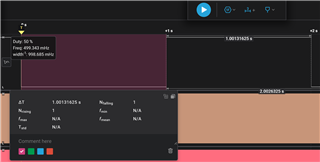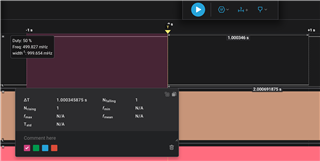Other Parts Discussed in Thread: TEST2
Tool/software:
Hi Team,
My customer want to use CC2340R5 for medical application and 32kHz RC Oscillator (LFOSC) is used.
They run the following two test to know the accuracy of the 32kHz RC Oscillator (LFOSC) w/ 48MHZ HFOSC:
Test 1:
Step1. Set LGPTimer to interrupt every 8ms
Step2. Before enabling LGPTimer(8ms), read TIME8U Register of RTC.
Step3. Wait interrupt of LGPTimer for 125 times and 125*8ms is One second.
Step4. Read TIME8U Register of RTC again -->
Step5. By subtracting two values of Step4 and Step2, we get the accuracy of RTC.
After testing at the Celsius temperature of 25 degrees , 1 degrees, and 50 degrees, the the value of Step5 is less than 2 (16 us).
If this test perform 18 hours, the time difference is about 1 second.
Test 2.
Mark current time, and use TIME524M register to perform cumulative timing.
After 18 hours, the time calculated time from TIME524M register is about 5 seconds different from the system time.
Please help to provide comment for the following items:
1. Is the above test method feasible?
If not, Please provide a method to determine the 32kHz RC Oscillator (LFOSC) .
We need to use it to compensate for the time error.
2.If the accuracy of the CC2340's 32KHz LFOSC may vary with temperature, please help to check the spec.
Thanks.



